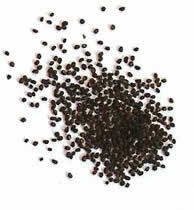Discover how to grow African Violet Seeds. Learn expert tips on sowing, germination and care for these delicate flowers. Perfect for indoor gardening enthusiasts.
African Violet Seeds are tiny and require careful handling. They need high humidity, warm temperatures (70-80°F) and bright, indirect light to germinate. Sow on the surface of sterile, fine-textured soil mix. Germination typically occurs in 10-14 days, with seedlings ready for transplanting in 6-8 weeks.
Introduction to African Violet Seeds

As a horticulturist specializing in indoor plants for over two decades, I’m excited to share my expertise on growing African Violet Seeds. While challenging, this process can be incredibly rewarding, allowing you to cultivate unique varieties and experience the full lifecycle of these beloved houseplants.
Understanding African Violet Seeds

African violets (Saintpaulia) are popular indoor plants known for their compact size and year-round blooms. Their seeds are extremely small, about the size of dust particles, making them challenging but fascinating to grow.
For more information on African violet taxonomy, visit the Botanical Gardens Conservation International database.
Obtaining African Violet Seeds
Sources
- Specialty seed suppliers
- Seed exchanges
- Self-pollination of existing plants
Seed Viability
African violet seeds remain viable for about 6 months to a year when stored properly in a cool, dry place.
Sowing African Violet Seeds
Timing
You can sow African violet seeds year-round for indoor growing, but spring is often preferred for natural light conditions.
Preparation
- Use a sterile, fine-textured seed-starting mix
- Moisten the soil before sowing
- Prepare a clean, shallow container with drainage holes
Sowing Process
- Sprinkle seeds on the surface of the soil
- Do not cover the seeds, as they need light to germinate
- Mist gently to settle seeds into the soil
For more detailed seed-starting techniques, check out the University of Minnesota Extension’s guide.
Germination Conditions
Light
Provide bright, indirect light. Avoid direct sunlight, which can be harmful to seedlings.
Temperature
Maintain a consistent temperature between 70-80°F (21-27°C).
Humidity
High humidity is crucial. Use a clear plastic cover or plastic bag to create a mini-greenhouse effect.
Watering
Keep the soil consistently moist but not waterlogged. Water from the bottom to avoid disturbing the tiny seeds.
Caring for Seedlings
Initial Growth
Germination typically occurs in 10-14 days. Tiny green specks will appear on the soil surface.
Thinning
When seedlings have 2-4 leaves, thin them to allow adequate space for growth.
Transplanting
At 6-8 weeks, when seedlings have several leaves, they’re ready for individual pots.
For more information on caring for young plants, visit the African Violet Society of America’s growing guide.
Common Challenges and Solutions
Damping Off
Caused by fungal diseases, this is a common problem in seedlings. Solution: Ensure good air circulation and avoid overwatering.
Slow Growth
Often due to insufficient light or nutrients. Solution: Provide adequate light and start fertilizing with a diluted, balanced fertilizer once seedlings have true leaves.
Pest Issues
Fungus gnats can be a problem in consistently moist soil. Solution: Allow the soil surface to dry between waterings and use sticky traps if necessary.
For more on pest management, check out the University of California’s IPM guide for houseplants.
Growing African violets from seeds is a test of patience and precision, but the reward of nurturing these tiny seeds into flowering plants is unparalleled. Remember, consistency in care is key – maintain proper light, temperature, and moisture levels throughout the growing process. With attention to detail and a bit of practice, you’ll soon be growing unique African violet varieties from seed.
For ongoing support and community, consider joining the African Violet Society of America, where you can connect with other enthusiasts and access additional resources.
Happy growing!
For more gardening tips and plant care guides, visit usagardenhub.com.

